7 Best Superzoom Cameras for Birding in 2025 – Reviews & Top Picks
Last Updated on
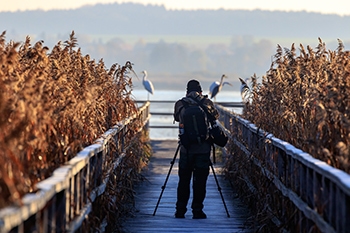
There’s just nothing quite like an incredibly zoomed-in close-up shot of a majestic winged creature such as an owl or an eagle. Of course, the effect isn’t the same if the image is blurry or out of focus. It must be sharp, crisp, and highly detailed to get the full effect. Today, many superzoom cameras exist, and quite a few are capable of taking impressive pictures like the ones we’ve just described. However, they’re not all equal when it comes to birding.
For birding, you need specific traits like blazing fast autofocus, good low-light performance, and either fast continuous shooting or high-quality 4K video—preferably both. We’ve searched low and high to find the superzoom cameras that met those qualifications, and the following seven reviews were our favorites. The first three are the ones that stood out above the rest as top performers and the best value, and they’re the ones we strongly recommend.

A Quick Comparison of Our Favorite Picks in 2025
| Image | Product | Details | ||
|---|---|---|---|---|
| Best Overall |
 |
Nikon DX-Format Digital SLR Camera |
|
CHECK PRICE |
| Best Value |
 |
Canon Powershot Digital Superzoom Birding Camera |
|
CHECK PRICE |
| Premium Choice |
 |
Sony a99II Digital Superzoom Camera |
|
CHECK PRICE |
 |
Nikon COOLPIX P1000 Digital Camera |
|
CHECK PRICE | |
 |
PANASONIC LUMIX FZ80 Digital Camera |
|
CHECK PRICE |
The 7 Best Superzoom Cameras for Birding
1. Nikon DX-Format Digital SLR Camera – Best Overall
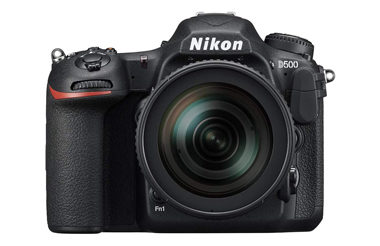
Quick to focus with excellent low-light performance, the Nikon D500 is the superzoom camera we recommend most for birding. The DX-format CMOS sensor is compatible with any lens in the NIKKOR lineup, though it is going to be an added expense to add a few to your arsenal. At two pounds this isn’t the lightest camera, but it’s one of the most capable. 153 autofocus points ensure your target is always captured in perfect clarity and is never out of focus.
The sensor lets in enough light to achieve excellent low-light photos that are free of grain and noise. Helping aid this even further, the native ISO goes up to 51,200 and the extended ISO goes to 1,640,000. We’d never crank it that high, but it can safely go high enough to brighten up even the darkest photos without introducing excessive noise. For capturing birds in motion, we suggest trying the 4K UHD video at 30 fps that lets you pull any frame as a still image so you never miss a single beat of their wings. Overall, this is the best superzoom camera for birding we have reviewed.
- DX-Format CMOS sensor
- 153-point autofocus
- Native ISO up to 51,200
- 4K UHD video at 30fps
- Compatible with all NIKKOR lenses
- 2 lbs is pretty heavy
- Requires separate lenses
2. Canon Powershot Digital Superzoom Birding Camera – Best Value
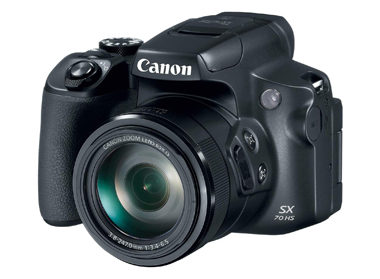
At about a third of the cost of our first-place pick, the Canon PowerShot SX70 packs in quite a bang for your buck. The 65X optical zoom puts you right in the middle of the action and delivers high-quality images every time. To aid in this, the excellent image stabilization that’s built-in will eliminate any hand shaking or unsteadiness so you are free to shoot by hand and not be forced to lug a heavy tripod around.
Our one complaint with the PowerShot SX70 is that sometimes it’s a bit slow to focus. Compared to the blazing fast autofocus of some of the other models we tested, this one seems a bit lethargic. But those other models are also many times the price of this one. With 4K video, you can capture video and still get perfect still shots, which is a great way to get photos of flying or diving birds. Between the great performance and low price, we think the Canon PowerShot SX70 is the best superzoom camera for birding for the money.
- 65X optical zoom for close-ups
- Excellent image stabilization
- Very affordable
- 4K video
- Can be slow to focus
3. Sony a99II Digital Superzoom Camera – Premium Choice
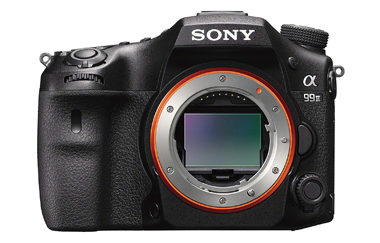
To say we were impressed with Sony A99II is a bit of an understatement. This camera is near the current pinnacle of digital camera technology and the performance it offers is hard to match at any price. The autofocus is so fast you don’t even notice it. Pictures are clear and free of blurring since they’re not only in focus, but they’re also stabilized by the 5-axis in-body image stabilization. This means you can shoot professional quality photographs even when hand holding it. Such performance isn’t cheap and you’ll be shelling out a small fortune for this camera. Even more when you consider that you’ll have to purchase lenses separately.
Birding takes place in nature where the weather and other elements can always affect you in ways you may not have foreseen. The A99II is prepared for all conditions with a dust and moisture resistant chassis that keeps it safe from whatever conditions you find yourself in. With 12 fps continuous shooting, you can have full resolution photos of entire sequences. Imagine that perfect shot of a seagull dive-bombing the water and carrying away a fish in its beak captured as an action sequence in progress, each shot perfectly clear.
- 12 fps continuous shooting
- Ultra-fast autofocus
- 5-axis in-body image stabilization
- Dust and moisture resistant
- Extremely expensive
- Still requires the purchase of additional lenses
4. Nikon COOLPIX P1000 Digital Camera
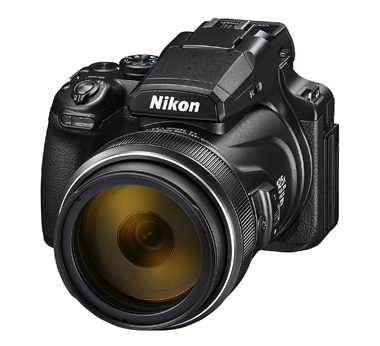
Equipped with the most powerful zoom lens of any Nikon Coolpix camera ever, the P1000 is a capable beast that can give you a bird’s eye view of any feathered subjects off on the horizon. The 3,000mm optical zoom is incredible and it put us right into the action of things that were happening so far off we couldn’t see it with the naked eye. On top of this, the Dual Detect image stabilization meant we could capture these superzoom pictures even while operating this camera by hand. The low-light performance was admirable and allowed for clear shots that were free of grain, even during sundown.
We also appreciated the 4K UHD video when it came time to take action sequences. This was especially important since the max speed this camera can continuously shoot at is just 7fps. This isn’t a deal-breaker, but we prefer at least 10fps. The final drawback of the Coolpix P1000 is that it’s just so bulky and heavy. It’s large in the hands and not the most comfortable to hold. Worse, at just over three pounds, the extra weight adds up quickly. This can introduce extra shake into your arms as they wear out.
- 3,000mm optical zoom
- 4K UHD video
- Dual detect image stabilization
- Great low-light performance
- 7 fps max continuous shooting
- Very heavy – just over 3 lbs
5. PANASONIC LUMIX FZ80 Digital Camera
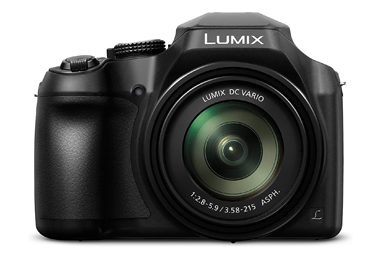
Affordable and capable, the Panasonic LUMIX FZ80 is a good starting point into superzoom bird photography. The 60X zoom is exciting until you realize that a lot of it is digital zoom and will be very blurry. The POWER O.I.S. is great for stabilizing your shots, even at the far end of the optical zoom range. We also liked the 4K QFHD video recording capabilities that made it very easy to capture high-quality videos of birds flying and pull individual frames as still photos. This is a notable feature at this price point.
Aside from the blurry digital zoom, there is another problem holding this camera back. It’s got pretty poor low-light performance. For the price, we didn’t expect anything different though. Overall, it’s a very capable camera, but when birding with a superzoom lens, we’d rather have the clarity of all optical-magnification instead of the poor image quality you get with digital zoom.
- 60X zoom
- Power O.I.S.
- 4K QFHD video
- Much of the zoom is digital and blurry
- Poor low-light capabilities
6. Nikon COOLPIX P900 Digital Birding Camera
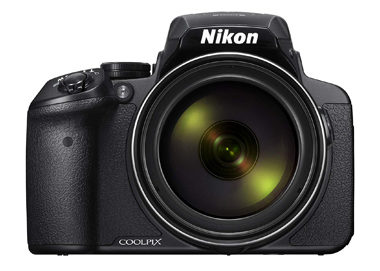
With 83X optical zoom, we always felt like we were right on top of the action. This kind of zoom delivers fantastic levels of detail. Despite having such incredible zoom capabilities, the Nikon COOLPIX P900 is a very affordable way to get started with superzoom birding. However, the small 1/2.3-inch sensor and max ISO of 6,400 combine into some dismal low-light performance. If you want to be able to take clear pictures near dusk or dawn, we’d steer clear of this one.
On top of the poor performance in low-light conditions, this camera has no 4K capabilities. This isn’t a deal-breaker, but other models we tested at the same price and even lower were equipped with 4K recording that allowed for shooting action sequences. Altogether, it’s a very capable camera. But for the price, we’d recommend going with something like the Canon PowerShot SX70 in our second position instead.
- Impressive 83X optical zoom
- Very affordably priced
- Small 1/2.3” sensor
- Max ISO of 6,400
- Poor low-light performance
- No 4K video
7. Canon Mark II DSLR Birding Camera
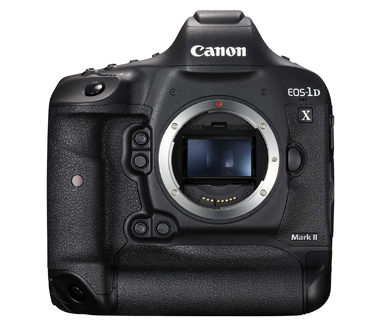
There’s no question, the Canon EOS-1DX Mark II is an outstanding camera by any measure. But it’s got some serious drawbacks that we think make it a less than optimal choice for birding unless you really want to spend a fortune. It’s one of the most expensive cameras we’ve seen at several times the price of any other camera on this list. On top of that, it’s extremely large and bulky, and it weighs in at nearly seven pounds. Keep in mind, this doesn’t include any lenses. Once you add the cost and weight of lenses, this is a very expensive and heavy setup.
With continuous shooting of up to 16fps, you’ll never miss a single moment of what’s happening. That said, we’ve seen faster continuous shooting on cameras a fraction of the cost, so it’s not as high as we’d like to see. The 4K video looked great, and we were able to pull 8.8MP still shots from any frame of the video. They looked completely clear and in focus, thanks to the lightning-fast autofocus abilities of the EOS-1DX Mark II.
- Continuous shooting at 16 fps
- 4K video with 8.8MP still frames
- Extremely high price
- Requires extra investment in lenses
- Nearly 7 pounds
- Massive and bulky makes it difficult to carry all day

Buyer’s Guide
Now that we’ve made it through the reviews, let’s briefly discuss just what traits are important in a superzoom camera for birding. Bird photography isn’t quite like other forms of photography, so what you need from your camera will be a bit different as well.
Optical Zoom
Everyone knows you need powerful zoom to get such a detailed close-up shot of a bird that you can count its feathers. However, the 60X zoom number you see may not be the whole picture. Often, manufacturers list the camera’s entire zoom capability in this number. Unfortunately, not all of this zoom is actually usable.
Optical zoom involves moving the glass lenses to create real magnification. Digital zoom, on the other hand, is made by artificially zooming into the image digitally. This introduces grain and noise into the picture as well as making it very blurry. For birding, we’re only concerned with optical zoom since digital zoom isn’t going to produce a clean image of high quality.
Autofocus
If you’re capturing pictures of birds, you’re likely going to be taking many shots of them in motion since they aren’t always sitting still and posing for your camera. In these cases, you need super-fast autofocus that can quickly acquire the target, then keep it in focus for the duration of your shots or video. Many cameras today have superb autofocus, but some take it to a new level by implementing high numbers of autofocus points from which to detect a subject. For the best focusing abilities, look for cameras with as many autofocus points as possible.
Size and Weight
Lugging a camera around all day searching for the perfect vantage point, angle, and photo can get very tiring. This is exacerbated by carrying heavy equipment that wears you down, tiring you out faster. Some higher-end cameras are massive and heavy because they’re filled with top-tier technology. Others are much more modest in their size and scope. We suggest these for birding since you’ll be likely carrying it around for quite some time on each outing.
Image Stabilization
If you’ve ever looked at your shots after a great birding session and been disappointed at how blurry they all were, you may have seen the consequences of hand-holding your camera while you shoot. Today, top cameras feature image stabilization technology that eliminates the blur from shake and movement, instead, delivering a crisp shot every time. This stabilization can even work while recording video, allowing you to get excellent shots with no movement.
To get such stable shots before required the use of a tripod. As you can imagine, lugging around a tripod to all the spots you want to go birding would be cumbersome and frustrating. With solid image stabilization, you can just as good of photos without carrying the extra equipment. We’d recommend looking for the most advanced image stabilization you can afford since it will make such a big difference in your bird photography game.

Conclusion:
For capturing that highly detailed close-up shot of an eagle tending its nest on the next mountaintop over, you’re going to need a superzoom camera. We’ve tested as many as we could find which you’ve read about in our reviews. Hopefully, you already know which camera is calling you, but if you can’t decide, we’re going to help a bit more by quickly summarizing our recommendations. The Nikon D500 was our favorite overall for many reasons. You can fit any NIKKOR lens on here to achieve incredible zoom. The autofocus is blisteringly fast and stays locked on target, and the large sensor and impressive ISO allow for great low-light shots.
The Canon PowerShot SX70 was our pick for best value with a 65X optical zoom, incredible image stabilization, and 4K video tucked into an affordable point and shoot package. Finally, the Sony A99II is the peak of performance for those who don’t mind paying a premium. 5-axis image stabilization, 12 fps continuous shooting, reliable and fast autofocus, and rock-steady image stabilization combine to make one of the best feature sets we’ve seen. We don’t think you can go wrong picking any of these three great superzoom cameras for birding.
You might also be interested in:
- Camcorder vs Camera: Which Is Better for Your Needs?
- Mirrorless vs. DSLR Cameras: What Are the Differences?
Table of Contents
- A Quick Comparison of Our Favorite Picks in 2025
- The 7 Best Superzoom Cameras for Birding
- 1. Nikon DX-Format Digital SLR Camera – Best Overall
- 2. Canon Powershot Digital Superzoom Birding Camera – Best Value
- 3. Sony a99II Digital Superzoom Camera – Premium Choice
- 4. Nikon COOLPIX P1000 Digital Camera
- 5. PANASONIC LUMIX FZ80 Digital Camera
- 6. Nikon COOLPIX P900 Digital Birding Camera
- 7. Canon Mark II DSLR Birding Camera
- Buyer’s Guide
- Conclusion:
About the Author Robert Sparks
Robert’s obsession with all things optical started early in life, when his optician father would bring home prototypes for Robert to play with. Nowadays, Robert is dedicated to helping others find the right optics for their needs. His hobbies include astronomy, astrophysics, and model building. Originally from Newark, NJ, he resides in Santa Fe, New Mexico, where the nighttime skies are filled with glittering stars.
Related Articles:
How to Clean a Refractor Telescope: Step-by-Step Guide
How to Clean a Telescope Eyepiece: Step-by-Step Guide
How to Clean a Rifle Scope: 8 Expert Tips
Monocular vs Telescope: Differences Explained (With Pictures)
What Is a Monocular Used For? 8 Common Functions
How to Clean a Telescope Mirror: 8 Expert Tips
Brightfield vs Phase Contrast Microscopy: The Differences Explained
SkyCamHD Drone Review: Pros, Cons, FAQ, & Verdict



